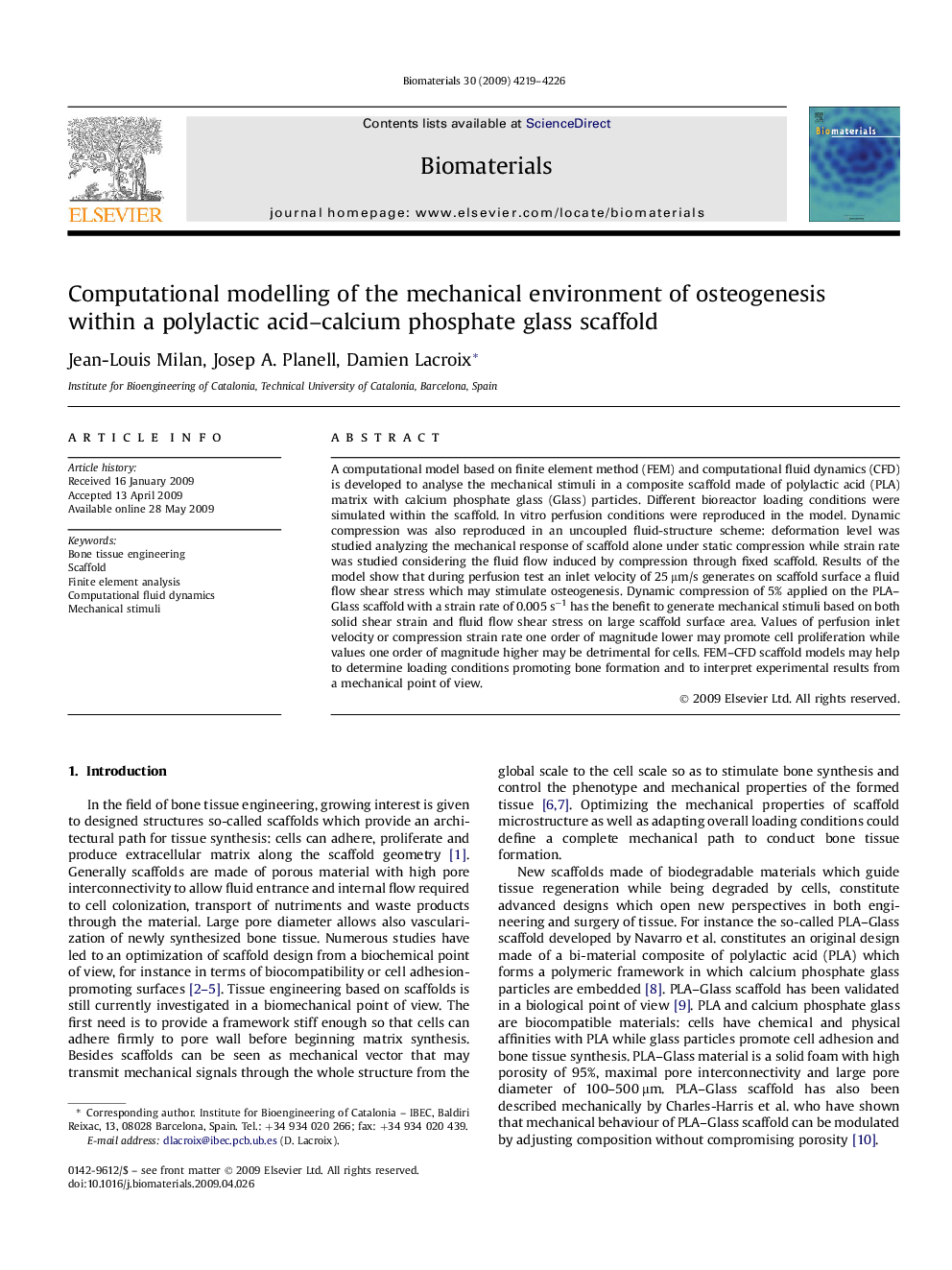| کد مقاله | کد نشریه | سال انتشار | مقاله انگلیسی | نسخه تمام متن |
|---|---|---|---|---|
| 9947 | 654 | 2009 | 8 صفحه PDF | دانلود رایگان |

A computational model based on finite element method (FEM) and computational fluid dynamics (CFD) is developed to analyse the mechanical stimuli in a composite scaffold made of polylactic acid (PLA) matrix with calcium phosphate glass (Glass) particles. Different bioreactor loading conditions were simulated within the scaffold. In vitro perfusion conditions were reproduced in the model. Dynamic compression was also reproduced in an uncoupled fluid-structure scheme: deformation level was studied analyzing the mechanical response of scaffold alone under static compression while strain rate was studied considering the fluid flow induced by compression through fixed scaffold. Results of the model show that during perfusion test an inlet velocity of 25 μm/s generates on scaffold surface a fluid flow shear stress which may stimulate osteogenesis. Dynamic compression of 5% applied on the PLA–Glass scaffold with a strain rate of 0.005 s−1 has the benefit to generate mechanical stimuli based on both solid shear strain and fluid flow shear stress on large scaffold surface area. Values of perfusion inlet velocity or compression strain rate one order of magnitude lower may promote cell proliferation while values one order of magnitude higher may be detrimental for cells. FEM–CFD scaffold models may help to determine loading conditions promoting bone formation and to interpret experimental results from a mechanical point of view.
Journal: Biomaterials - Volume 30, Issue 25, September 2009, Pages 4219–4226